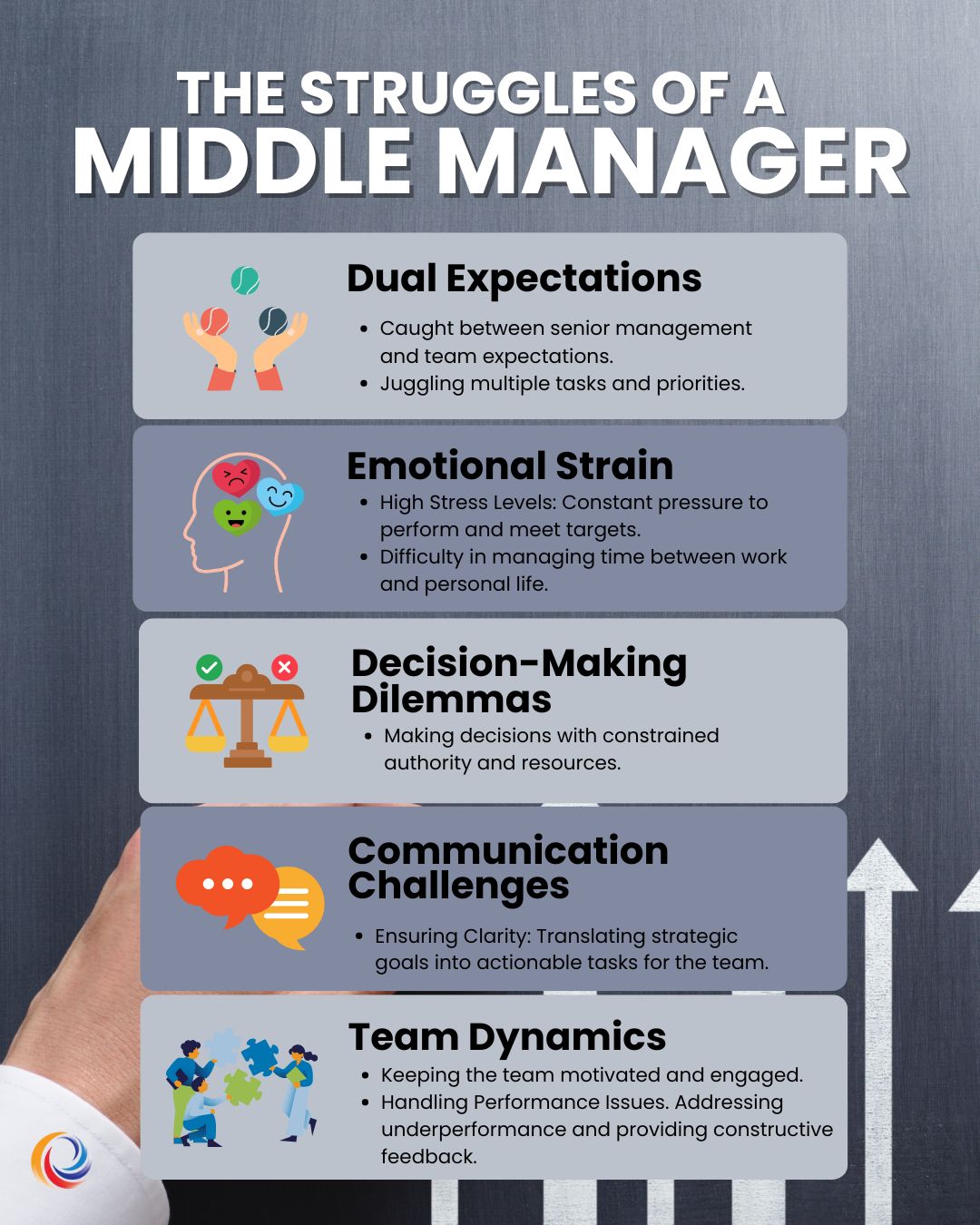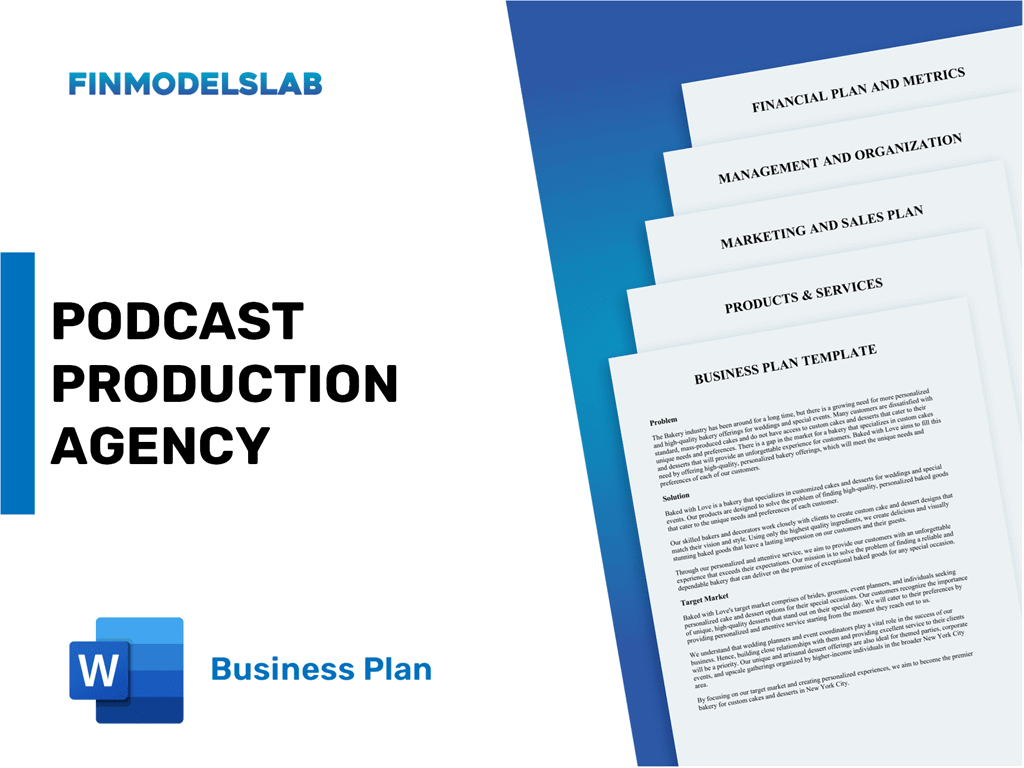How Middle Management Drives Productivity And Improves Employee Satisfaction

Table of Contents
Fostering a Positive and Supportive Work Environment
A positive work environment is the cornerstone of increased productivity and higher employee satisfaction. Middle managers play a vital role in cultivating this environment through effective communication and meaningful recognition.
Open Communication and Feedback Mechanisms
Open communication is the lifeblood of a thriving team. Middle managers should strive to create a culture where feedback flows freely, both upwards and downwards.
- Regular Check-ins and One-on-Ones: Schedule frequent one-on-one meetings with team members to discuss individual progress, challenges, and concerns. These meetings provide a safe space for open dialogue and address issues promptly.
- Anonymous Feedback Surveys: Utilize anonymous surveys to gather honest employee opinions about the work environment, team dynamics, and management practices. This ensures candid feedback without fear of reprisal.
- Encourage Open Dialogue: Create a culture where employees feel comfortable expressing their ideas, concerns, and suggestions without hesitation. Actively listen and respond to their input.
- Consistent Communication Strategies: Employ clear and consistent communication strategies to ensure everyone is informed about company updates, project goals, and important decisions. This transparency builds trust and reduces confusion.
Recognizing and Rewarding Employee Contributions
Recognizing and rewarding employees is crucial for boosting morale and fostering a sense of value. A robust recognition program demonstrates appreciation for hard work and dedication.
- Implement a Recognition Program: Establish a formal program that acknowledges both individual and team achievements. This could include verbal praise, written acknowledgements, small gifts, or public recognition.
- Professional Development Opportunities: Invest in employee growth by providing opportunities for professional development, training, and advancement. This shows commitment to their career progression.
- Incentives and Rewards: Offer incentives and rewards for exceeding expectations, surpassing goals, or demonstrating exceptional performance. This motivates employees to go the extra mile.
Effective Delegation and Empowerment
Effective delegation and empowerment are essential for optimizing team performance and fostering a sense of ownership among team members.
Clearly Defining Roles and Responsibilities
Clarity is key to efficient workflow and prevents misunderstandings. Middle managers should ensure that everyone understands their roles and responsibilities.
- Clear Job Descriptions: Provide clear and concise job descriptions that outline specific tasks, responsibilities, and performance expectations.
- Effective Task Delegation: Delegate tasks effectively, matching responsibilities with employees' skills and strengths. Consider individual preferences and career goals when assigning tasks.
- Training and Resources: Ensure that employees have access to the necessary training, resources, and support to successfully complete their assigned tasks.
Trusting and Empowering Team Members
Empowering employees to make decisions fosters ownership and increases engagement. Middle managers should trust their team members' abilities and provide the necessary support.
- Autonomy in Decision-Making: Give employees the autonomy to make decisions within their scope of work. This fosters a sense of responsibility and ownership.
- Supportive Guidance, Not Micromanagement: Provide guidance and support without resorting to micromanagement. Trust your team members to handle their responsibilities effectively.
- Culture of Trust and Respect: Foster a culture of trust and mutual respect where employees feel valued and appreciated.
Strategic Goal Setting and Performance Management
Setting clear goals and providing regular feedback are crucial for driving performance and ensuring alignment with organizational objectives.
Setting SMART Goals and Tracking Progress
SMART goals (Specific, Measurable, Achievable, Relevant, and Time-bound) provide a clear roadmap for success.
- Collaborative Goal Setting: Involve team members in the goal-setting process to foster ownership and buy-in.
- Regular Progress Monitoring: Regularly monitor progress towards goals and provide constructive feedback. Adjust goals as needed based on performance and changing circumstances.
Providing Regular Performance Feedback and Coaching
Regular feedback helps employees understand their strengths and weaknesses, allowing them to continuously improve.
- Constructive Performance Reviews: Conduct regular performance reviews that are both constructive and supportive. Focus on both achievements and areas for improvement.
- Coaching and Mentoring: Offer regular coaching and mentoring to help employees improve their skills and performance. Provide opportunities for growth and development.
The Impact of Middle Management on Productivity and Employee Satisfaction
In conclusion, effective middle management is directly linked to increased productivity and higher employee satisfaction. By fostering a positive work environment, delegating effectively, empowering team members, and implementing robust performance management strategies, middle managers can significantly impact the success of their organizations. The strategies discussed – open communication, employee recognition, clear delegation, empowerment, and strategic goal setting – are interconnected and crucial for achieving optimal results. Implementing these strategies will directly improve "Middle Management Drives Productivity and Improves Employee Satisfaction." To learn more about best practices in middle management, consider exploring resources such as leadership development programs and relevant industry publications. Invest in your middle managers, and you'll reap the rewards of a more productive and engaged workforce.

Featured Posts
-
 Ray Epps Sues Fox News For Defamation Jan 6 Falsehoods Allegations
Apr 29, 2025
Ray Epps Sues Fox News For Defamation Jan 6 Falsehoods Allegations
Apr 29, 2025 -
 Double Trouble In Hollywood The Impact Of The Writers And Actors Strike
Apr 29, 2025
Double Trouble In Hollywood The Impact Of The Writers And Actors Strike
Apr 29, 2025 -
 The Winning Names Minnesotas Snow Plow Contest Results
Apr 29, 2025
The Winning Names Minnesotas Snow Plow Contest Results
Apr 29, 2025 -
 Kuxiu Solid State Power Bank A Premium Investment In Lasting Power
Apr 29, 2025
Kuxiu Solid State Power Bank A Premium Investment In Lasting Power
Apr 29, 2025 -
 Guilty Plea Lab Owner Manipulated Covid 19 Test Results
Apr 29, 2025
Guilty Plea Lab Owner Manipulated Covid 19 Test Results
Apr 29, 2025
Latest Posts
-
 Podcast Production Reimagined Ais Role In Processing Repetitive Scatological Texts
Apr 29, 2025
Podcast Production Reimagined Ais Role In Processing Repetitive Scatological Texts
Apr 29, 2025 -
 Immigration Enforcement Raid On Underground Nightclub Results In Numerous Detainees
Apr 29, 2025
Immigration Enforcement Raid On Underground Nightclub Results In Numerous Detainees
Apr 29, 2025 -
 One Plus 13 R In Depth Review And Pixel 9a Comparison
Apr 29, 2025
One Plus 13 R In Depth Review And Pixel 9a Comparison
Apr 29, 2025 -
 Ai Driven Podcast Creation Transforming Repetitive Scatological Data
Apr 29, 2025
Ai Driven Podcast Creation Transforming Repetitive Scatological Data
Apr 29, 2025 -
 Underground Nightclub Bust Over 100 Immigrants Detained In Police Raid
Apr 29, 2025
Underground Nightclub Bust Over 100 Immigrants Detained In Police Raid
Apr 29, 2025
